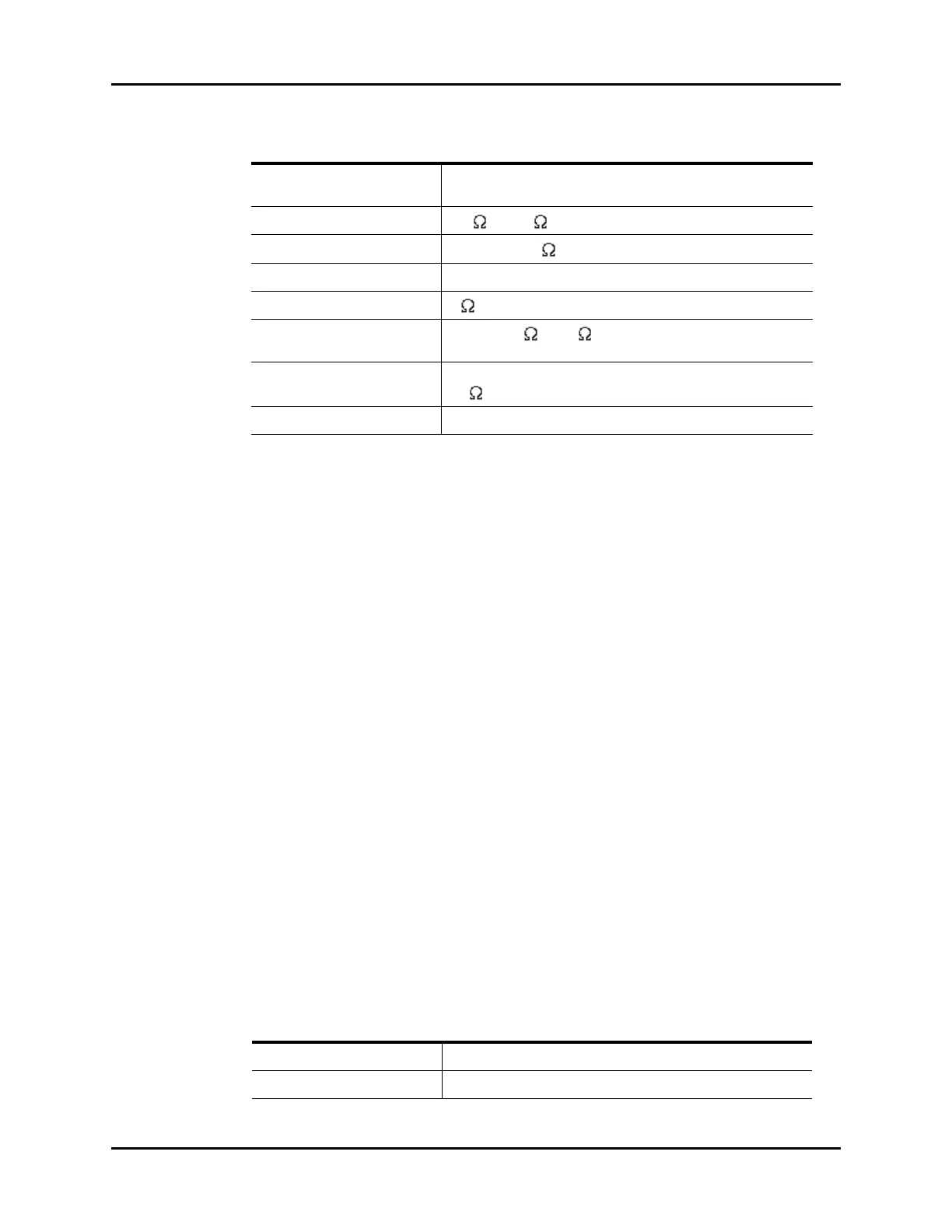V Series Operating Instructions 29 - 29
Product Specifications Impedance Respiration Performance
2. Respiration Alarms
Respiration function includes High and Low respiration rate alarms. Alarms can be triggered when
measured rate is equal to or greater/lesser than the alarm setting.
High Alarm Limits:
Low Alarm Limits:
Apnea Alarm Delay:
V 12/V 21 in conjunction with:
B. 12 Lead ECG for impedance respiration
1. Performance:
Bandwidth: 0.1 Hz to 3 Hz (-3 dB) for adults
0.2 Hz to 3 Hz (-3 dB) for pediatric and neonatal patients
Baseline Impendence Range: 200 to 2000 at patient with 1k resistor in the ECG cable.
High Impedance Indication: Greater than 2.2 k at patient.
User Selectable Scale: Five (5) gains are provided.
Linear Signal Range: 8 p-p minimum.
Noise: Less than 0.05 at 500 patient impedance, using a Mindray ECG
cable.
Min. Breath Height Detected: It is function of respiration scale. Waveform needs to be Greater than
0.1 in order for breathes to be accurately detected.
Cardiovascular Artifact Rejection: Detected by algorithm.
Adult: 10 to 190 RPM in steps of 1 RPM, default Off
Pediatric: 10 to 190 RPM in steps of 1 RPM, default Off
Neonate: 10 to 190 RPM in steps of 1 RPM, default Off
Adult: 5 to 50 RPM in steps of 1 RPM, default Off
Pediatric: 5 to 50 RPM in steps of 1 RPM, default Off
Neonate: 5 to 50 RPM in steps of 1 RPM, default Off
Adult: 10 to 60 seconds adjustable in steps of 1 second, default 30 sec
Pediatric: 10 to 20 seconds adjustable in steps of 1 second, default 15 sec
Neonate: 10 to 20 seconds adjustable in steps of 1 second, default 15 sec
TABLE 29-28
Sensing Lead: Lead II or I
Default Sensing Lead: Lead II
TABLE 29-27 (Continued)

